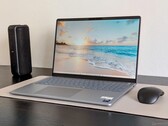
Dell 16 Plus laptop review: A wave goodbye to the Inspiron series
Intel Core Ultra 7 256V | Intel Arc Graphics 140V | 16.00" | 1.8 kg
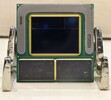
The Intel Core Ultra 5 256V is an upper mid-range Lunar Lake family processor. This is an SoC for use in tablets and laptops of the slimmer kind that was unveiled in Autumn 2024. It sports 4 new Skymont E-cores and 4 new Lion Cove P-cores running at up to 3.7 GHz and 4.8 GHz respectively, along with the new Arc 140V iGPU and 16 GB of on-package LPDDR5x-8533 RAM. A new 47 TOPS neural engine, Thunderbolt 4 and PCIe 5 SSD support are included as well.
The only difference between this chip and the Ultra 7 258V is the amount of on-package, non-replaceable RAM: 16 GB vs 32 GB respectively.
Architecture and Features
Lunar Lake is built using the Foveros technology (stacking several dies on top of each other and next to each other), just like Meteor Lake was. The new chips make use of the enormous BGA2833 socket interface. Of the 8 cores, not a single one is Hyper-Threading-enabled which is the opposite of what AMD currently does with its Zen 5/5c chips.
Intel claims Lion Cove cores bring a 14% IPC improvement over Redwood Cove. For Skymont and Crestmont, the difference is much higher at 68%. Several tweaks and improvements are present here, such as the Low Latency Fabric that is supposed to make small data transfers between cores/caches a lot faster. The 256V has a very healthy 12 MB of level 3 cache; elsewhere, it has 4 PCIe 5 and 4 PCIe 4 lanes for connecting various kinds of devices, including NVMe SSDs at up to 15.75 GB/s. Thunderbolt 4 support is onboard by default, as is support for CNVi WiFi 7 + BT 5.4 cards from Intel. The 47 TOPS "AI Boost" neural engine is present along with technologies such as Threat Detection to make AI-enabled applications such as the Windows Defender more powerful.
Intel is predicted to get short of on-package RAM in subsequent CPU generations.
Performance
Based on the time we've had with 2 systems powered by the 256V, the chip's multi-thread performance is as good as that of the Core Ultra 7 165U and the Core i7-1360P. Please note that both systems had a higher long-term TDP power target than the Intel-recommended value: 30 W and 32 W vs 17 W.
Generally speaking, the 288V, 268V, 266V, 258V, 256V are faster than the 238V, 236V, 228V and 226V due to the difference in their last-level cache size (8 MB vs 12 MB) as well as clock speeds. However, the difference in performance between the slowest Lunar Lake chip, the 226V, and the fastest chip, the 288V is fairly small at around 10% to 15%. It depends on the TDP figures of the laptops being pitted against each other more than on anything else.
Graphics
The Arc Graphics 140V is here to replace the Arc 8 iGPU. Its 8 Xe² architecture "cores" run at up to 1,950 MHz and it also has 8 ray tracing units at its disposal. The adapter is DirectX 12 Ultimate-enabled and able to HW-decode a long list of popular video codecs such as h.266 VVC, h.265 HEVC, h.264 AVC, AV1 and VP9. Three SUHD 4320p monitors can be used simultaneously with this iGPU.
All 2023 and 2024 games are playable at 1080p on low graphics settings or higher with this iGPU. We got well over 30 fps in Ghost of Tsushima and almost 40 fps in Baldur's Gate 3. This means the Radeon 780M gets left behind while the Radeon 890M reigns supreme.
Power consumption
This 2nd generation Core Ultra processor is supposed to consume 17 W when under long-term workloads. The Intel-recommended short-term power limit for the chip sits at 37 W.
| Codename | Lunar Lake | ||||||||||||||||||||||||||||||||||||
| Series | Intel Lunar Lake | ||||||||||||||||||||||||||||||||||||
Series: Lunar Lake Lunar Lake
| |||||||||||||||||||||||||||||||||||||
| Clock Rate | 2200 - 4800 MHz | ||||||||||||||||||||||||||||||||||||
| Level 1 Cache | 1.4 MB | ||||||||||||||||||||||||||||||||||||
| Level 2 Cache | 14 MB | ||||||||||||||||||||||||||||||||||||
| Level 3 Cache | 12 MB | ||||||||||||||||||||||||||||||||||||
| Number of Cores / Threads | 8 / 8 4 x 4.8 GHz Intel Lion Cove P-Core 4 x 3.7 GHz Intel Skymont E-Core | ||||||||||||||||||||||||||||||||||||
| Power Consumption (TDP = Thermal Design Power) | 17 Watt | ||||||||||||||||||||||||||||||||||||
| TDP Turbo PL2 | 37 Watt | ||||||||||||||||||||||||||||||||||||
| Manufacturing Technology | 3 nm | ||||||||||||||||||||||||||||||||||||
| Max. Temperature | 100 °C | ||||||||||||||||||||||||||||||||||||
| Socket | BGA2833 | ||||||||||||||||||||||||||||||||||||
| Features | LPDDR5x-8533 RAM, PCIe 5 + PCIe 4, USB 4, AI Boost NPU (47 TOPS), Thread Director, PSE, Threat Detection, MMX, SSE, SSE2, SSE3, SSSE3, SSE4.1, SSE4.2, AES, AVX, AVX2, AVX-VNNi, FMA3, SHA | ||||||||||||||||||||||||||||||||||||
| GPU | Intel Arc Graphics 140V (300 - 1950 MHz) | ||||||||||||||||||||||||||||||||||||
| NPU / AI | 47 TOPS INT8 | ||||||||||||||||||||||||||||||||||||
| Chip AI | 115 TOPS INT8 | ||||||||||||||||||||||||||||||||||||
| 64 Bit | 64 Bit support | ||||||||||||||||||||||||||||||||||||
| Architecture | x86 | ||||||||||||||||||||||||||||||||||||
| Announcement Date | 09/03/2024 | ||||||||||||||||||||||||||||||||||||
| Product Link (external) | ark.intel.com | ||||||||||||||||||||||||||||||||||||


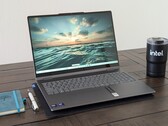
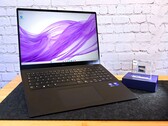
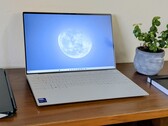
Lenovo Yoga Slim 7 15ILL9 Aura: Intel Arc Graphics 140V, 15.30", 1.5 kg
Review » Intel Core Ultra 7 256V performance debut: Lenovo Yoga Slim 7 15 Aura laptop review
Schenker Lunar Lake Engineering Sample: Intel Arc Graphics 140V
Review » Intel Lunar Lake CPU analysis - The Core Ultra 7 258V's multi-core performance is disappointing, but its everyday efficiency is good
HP Omnibook 7 Flip 16-au0000: Intel Arc Graphics 140V, 16.00", 1.8 kg
External Review » HP Omnibook 7 Flip 16-au0000
Dell 16 Plus: Intel Arc Graphics 140V, 16.00", 1.8 kg
External Review » Dell 16 Plus
Lenovo Yoga 7 16ILL10: Intel Arc Graphics 140V, 14.00", 1.4 kg
External Review » Lenovo Yoga 7 16ILL10
Acer Aspire 14 AI A14-52MT, Ultra 7 256V: Intel Arc Graphics 140V, 14.00", 1.4 kg
External Review » Acer Aspire 14 AI A14-52MT, Ultra 7 256V
Dell 14 Plus 2-in-1, Ultra 7 256V: Intel Arc Graphics 140V, 14.00", 1.6 kg
External Review » Dell 14 Plus 2-in-1, Ultra 7 256V
LG Gram Pro 16Z90TS-G.AU89G: Intel Arc Graphics 140V, 16.00", 1.2 kg
External Review » LG Gram Pro 16Z90TS-G.AU89G
Dell 14 Plus: Intel Arc Graphics 140V, 14.00", 1.5 kg
External Review » Dell 14 Plus
Samsung Galaxy Book5 360: Intel Arc Graphics 140V, 15.60", 1.5 kg
External Review » Samsung Galaxy Book5 360
Asus VivoBook 14 Flip TP3407SA: Intel Arc Graphics 140V, 14.00", 1.6 kg
External Review » Asus VivoBook 14 Flip TP3407SA
Acer Swift 16 AI SF16-51, Ultra 7 256V: Intel Arc Graphics 140V, 16.00", 1.5 kg
External Review » Acer Swift 16 AI SF16-51, Ultra 7 256V
Samsung Galaxy Book5 Pro NP960: Intel Arc Graphics 140V, 16.00", 1.6 kg
External Review » Samsung Galaxy Book5 Pro NP960
Asus Vivobook S 14 OLED S5406SA, Ultra 7 256V: Intel Arc Graphics 140V, 14.00", 1.3 kg
External Review » Asus Vivobook S 14 OLED S5406SA, Ultra 7 256V
Dell XPS 13 9350: Intel Arc Graphics 140V, 13.40", 1.2 kg
External Review » Dell XPS 13 9350
Samsung Galaxy Book5 Pro 360: Intel Arc Graphics 140V, 16.00", 1.7 kg
External Review » Samsung Galaxy Book5 Pro 360
Lenovo Yoga Slim 7 15ILL9 Aura: Intel Arc Graphics 140V, 15.30", 1.5 kg
External Review » Lenovo Yoga Slim 7 15ILL9 Aura
Lenovo Yoga 7 2-in-1 16ILL10: Intel Arc Graphics 140V, 16.00", 1.9 kg
» Lenovo Yoga 7 2-in-1 with Lunar Lake processor and 1 TB SSD drops under $719
Lenovo Yoga Slim 7 15ILL9 Aura: Intel Arc Graphics 140V, 15.30", 1.5 kg
» Lenovo Yoga Slim 7i Aura Edition with 3K 120 Hz display and Core Ultra 7 gets 24% price cut
Lenovo Yoga 7 2-in-1 16ILL10: Intel Arc Graphics 140V, 16.00", 1.9 kg
» 2025 Lenovo Yoga 7 2-in-1 16 is a huge improvement over last year's model but with one exception
Dell 16 Plus: Intel Arc Graphics 140V, 16.00", 1.8 kg
» Avoid overpaying for the Dell 16 Plus by customizing your order instead
Lenovo Yoga Slim 7 15ILL9 Aura: Intel Arc Graphics 140V, 15.30", 1.5 kg
» Lenovo Yoga Slim 7i Aura Edition laptop with long battery life and 120 Hz display hits record-low price after 31% discount
» Lenovo Slim 7i 14 Gen 9 (2024) OLED laptop drops to new lowest-ever price of less than $650
» Long-lasting Lenovo Yoga Slim 7i Aura Edition price reaches new record low after 32% discount
Dell XPS 13 9350: Intel Arc Graphics 140V, 13.40", 1.2 kg
» Latest Dell XPS 13 9350 laptop with 20-hour battery life and 120 Hz display is now up to $500 cheaper than MSRP
Lenovo Yoga Slim 7 15ILL9 Aura: Intel Arc Graphics 140V, 15.30", 1.5 kg
» Lenovo Yoga Slim 7i Aura Edition is battery life beast and now cheaper than ever after 23% discount
» Mobile CPU Comparison
Comparison of all mobile CPU series
» Mobile Processors - Benchmarklist
Benchmarklist of all known CPUs that are used in laptops (desktop and laptop CPUs)
Top 10 Laptops
Multimedia, Budget Multimedia, Gaming, Budget Gaming, Lightweight Gaming, Business, Budget Office, Workstation, Subnotebooks, Ultrabooks, Chromebooks
under 300 USD/Euros, under 500 USD/Euros, 1,000 USD/Euros, for University Students, Best Displays
Top 10 Smartphones
Smartphones, Phablets, ≤6-inch, Camera Smartphones